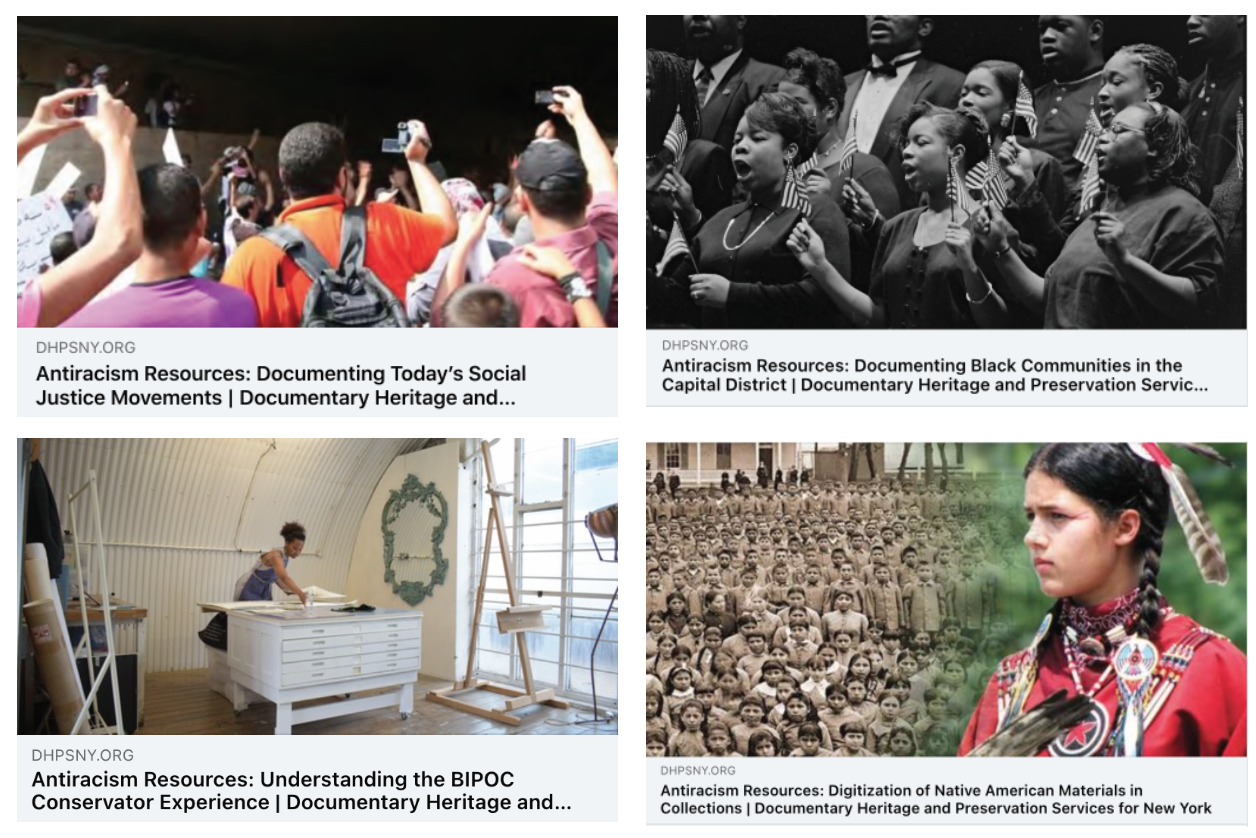Translate
Antiracism Resources: Annual Check-in and Update

This month marks one full year that DHPSNY has been coordinating, writing about, and sharing antiracism resources for collecting institutions in this blog series. We have compiled a lot of ideas and projects from around the archives, libraries, museums, conservation, and public history fields that speak to improving access to collections and highlighting the stories of BIPOC and traditionally marginalized populations in the historical record. We hope that some of these tools and examples have been beneficial for expanding and improving your work towards inclusion and equity, both in collections care as well as in the operations of your organization.
We’ll briefly recap some of the themes that have been discussed as we’ve worked to share and contextualize resources. There were posts that touched on actively supporting BIPOC colleagues throughout the cultural heritage field, and committing to diversity in staffing. Other posts explored all aspects of archival and collections management, from codifying anti-racist policies and procedures to developing an intentionally anti-racist lens for description. We also shared a wide variety of projects and examples from organizations that are documenting traditionally marginalized communities, collecting materials related to current social justice movements, and working with or directly empowering communities to engage in collecting materials and telling their own stories. We’ve also attempted to highlight the work of people who are doing active research to find oft-hidden narratives within archival and library collections, as well as those who are developing new resources for access, education, and engagement with Black and Native American history.
Our team has realized that these blog posts can be hard to find or search through after the point when they are posted. In the interest of ensuring the shared resources are most accessible, we are adding a central hub to the DHPSNY website Resources page in the upcoming weeks, which will have a brief description and a direct link to the resources, as well as a link back to each corresponding blog post. Please make sure to check it out!
Additionally, our work will grow beyond resource-sharing as we look to the future and determine where else DHPSNY can actively develop and support antiracist efforts throughout New York State. In collaboration with Aria Strategies LLC, we will be presenting webinars focused on the fundamentals of antiracist actions, as well as exploring the work that collecting organizations must do to implement antiracist policies and systems. Furthermore, the team at Aria Strategies will be developing and facilitating a series of DHPSNY Dialogues, with a variety of topics determined by our statewide constituents. We expect that some of these conversations will include how antiracism work is continually impactful and essential within your collecting institution.
As we wrote in the first blog post of this series, “Dialogue and communication about race is essential to antiracism work,” and we hope that this blog has inspired increased conversation and action throughout the field. Have any of the past resources or projects we’ve shared inspired you to embark upon or improve a focus on antiracism within your organization? Is there anything you would like to see and participate in, regarding a focus on antiracist programming from DHPSNY moving forward? Please email us at info@DHPSNY.org, or connect with us on the DHPSNY Facebook page or DHPSNY Community Facebook Group.
This is part of a biweekly blog series on sharing information, promoting resources, encouraging discussion, and amplifying the voices of Black, Indigenous, and People of Color (BIPOC) doing antiracism work in archives, museums, history sites, and library special collections. DHPSNY is committed to supporting the diverse network of collecting institutions that safeguard and ensure access to historical records and library research materials across New York State. To learn more, visit our first blog post in the series.